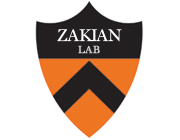Saccharomyces cerevisiae Rrm3p DNA helicase promotes genome integrity by preventing replication fork stalling: viability of rrm3 cells requires the intra-S-phase checkpoint and fork restart activities.
Publication Year
2004
Type
Journal Article
Abstract
Rrm3p is a 5'-to-3' DNA helicase that helps replication forks traverse protein-DNA complexes. Its absence leads to increased fork stalling and breakage at over 1,000 specific sites located throughout the Saccharomyces cerevisiae genome. To understand the mechanisms that respond to and repair rrm3-dependent lesions, we carried out a candidate gene deletion analysis to identify genes whose mutation conferred slow growth or lethality on rrm3 cells. Based on synthetic phenotypes, the intra-S-phase checkpoint, the SRS2 inhibitor of recombination, the SGS1/TOP3 replication fork restart pathway, and the MRE11/RAD50/XRS2 (MRX) complex were critical for viability of rrm3 cells. DNA damage checkpoint and homologous recombination genes were important for normal growth of rrm3 cells. However, the MUS81/MMS4 replication fork restart pathway did not affect growth of rrm3 cells. These data suggest a model in which the stalled and broken forks generated in rrm3 cells activate a checkpoint response that provides time for fork repair and restart. Stalled forks are converted by a Rad51p-mediated process to intermediates that are resolved by Sgs1p/Top3p. The rrm3 system provides a unique opportunity to learn the fate of forks whose progress is impaired by natural impediments rather than by exogenous DNA damage.
Keywords
Journal
Mol Cell Biol
Volume
24
Issue
8
Pages
3198-212
Date Published
04/2004
ISSN Number
0270-7306
Alternate Journal
Mol. Cell. Biol.
PMID
15060144

